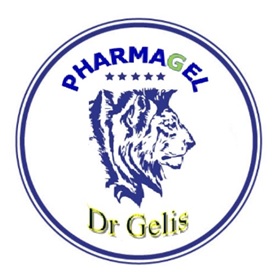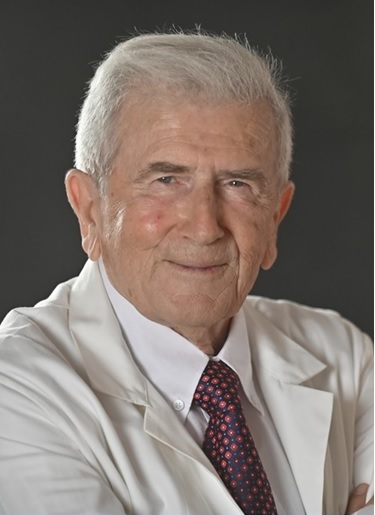It is associated with anti-SSA or SSA positivity and/or significant infiltrate at minor salivary gland biopsy.
Besides the typical glandular symptoms, other systemic symptoms, denoted as extraglandular manifestations (EGMs), can also be found in a subset of patients contributing to the morbidity of the disease
This autoimmune disease is relatively frequent, more prevalent in women with a clinical diagnosis among postmenopausal women after the 5 decade. Its physiopathology is complex and associated with the intervention of environmental, genetic and epigenetic factors.
Salivary epithelial cell is at the center of the pathological immune response of primary Sjögren’s syndrome, characterized by a chronic B cell polyclonal activation potentially leading to the development of B cell lymphoma [1].
Primary Sjögren’s syndrome (SS) is a chronic autoimmune disease primarily involving the exocrine glands with complex etiopathogenesis.
Patients with primary Sjögren’s syndrome (pSS) are at a higher risk of developing non-Hodgkin’s lymphoma (NHL) [2].
Patients with pSS, overall, did not have higher risk of cancer, and only patients aged 25-44 years were at an increased risk of cancer compared with their counterparts in the general population. Cancer screening for patients with pSS, especially female patients, should focus on non-Hodgkin’s lymphoma (NHL) and multiple myeloma and thyroid gland cancer [3].
Autonomic symptoms are common among patients with PSS and may contribute to the overall burden of symptoms and link with systemic disease activity [4].
The clinical picture of SS ranges from exocrinopathy to systemic disease affecting the lung, kidney, liver, skin, musculockeletal and nervous systems. The morbidity of SS is mainly determined by extraglandular disease and increased prevalence of lymphoma.
Environmental and hormonal factors, such as vitamin-D may play a role in the pathogenic process and disease expression [5].
Vitamin D3 is considered as an immunoregulator and has led to the concept of a dual function as both as an important secosteroid hormone for the regulation of body calcium homeostasis and as an essential organic compound that has been shown to have a crucial effect on the immune responses. Altered levels of vitamin D3 have been associated, by recent observational studies, with a higher susceptibility of immune-mediated disorders and inflammatory diseases [6].
Müller K, et al (1992) investigated the vitamin D3 metabolism in 35 patients with primary Sjögren’s syndrome by measuring blood concentrations of 1 alpha,25-dihydroxyvitamin D3 (1 alpha,25-(OH)2D3) and 25-hydroxyvitamin D3 (25-OHD3), as well as phenotypes and blood concentrations of Gc globulin, the main vitamin D3 binding protein in the blood.
25-(OH)D3 concentrations were diminished, but those of 1 alpha,25-(OH)2D3 were normal. There was no significant difference between the distribution of Gc phenotypes in the patients with primary Sjögren’s syndrome and normal controls. Likewise, blood concentrations of Gc globulin corresponded to normal values.
Among patients with increased concentrations of IgM rheumatoid factor there was a significant negative correlation between the serum titres of IgM rheumatoid factor and 25-(OH)D3 concentrations [7].
Agmon-Levin N, et al (2012) evaluated the levels of vitamin-D and their association with manifestations of SS, determining the vitamin D levels in 176 patients with primary Sjögren’s syndrome (SS) and 163 matched healthy volunteers utilizing the LIAISON chemiluminescent immunoassays (DiaSorin-Italy) [5].
They correlated vitamin-D levels and clinical and serological manifestations of SS.
Mean vitamin-D levels were comparable between SS patients and control 21.2 ± 9.4 ng/ml and 22.4 ± 10 ng/ml, respectively. Peripheral neuropathy was diagnosed in 23% of SS patients and associated with lower vitamin-D levels (18.6 ± 5.5 ng/ml vs. 22.6±8 ng/ml (p = 0.04)). Lymphoma was diagnosed in 4.3% of SS patients, who had lower levels of vitamin-D (13.2 ± 6.25 ng/ml), compared to SS patients without lymphoma (22 ± 8 ng/ml), (p = 0.03). Other clinical and serological manifestations did not correlate with vitamin-D status.
Among the vitamin D3 supplements the most absorbable is the vitamin D3 in extra virgin organic olive oil [D3 Gelin drops]. The dose depends on the levels of 25 hydroxyvitamin D3 in the blood serum.
In case of deficiency or insufficiency of vitamin D3 the dose provided of D3 Gelin drops is 4000-5000 IU daily for 2 months and the dose is readjusted according to the levels of 25 hydroxyvitamin D3. The ideal levels in patients with lymphoma are the 50-70ng/ml.
References
1.Fauchais AL, Martel C, Vidal E. Epidemiology and physiopathogy of Sjögren’s syndrome. Rev Prat. 2012 Feb;62(2):218-20.
2. Weng MY, Huang YT, Liu MF, Lu TH. Incidence of cancer in a nationwide population cohort of 7852 patients with primary Sjogren’s syndrome in Taiwan. Ann Rheum Dis. 2012 Apr;71(4):524-7. doi: 10.1136/annrheumdis-2011-200402. Epub 2011 Nov 9.
3. Weng MY, Huang YT, Liu MF, Lu TH. Incidence of cancer in a nationwide population cohort of 7852 patients with primary Sjogren’s syndrome in Taiwan. Ann Rheum Dis. 2012 Apr;71(4):524-7. doi: 10.1136/annrheumdis-2011-200402. Epub 2011 Nov 9.
4. Newton JL, Frith J, Powell D, Hackett K, Wilton K, Bowman S, Price E, Pease C, Andrews J, Emery P, Hunter J, Gupta M, Vadivelu S, Giles I, Isenberg D, Lanyon P, Jones A, Regan M, Cooper A, Moots R, Sutcliffe N, Bombardieri M, Pitzalis C, McLaren J, Young-Min S, Dasgupta B, Griffiths B, Lendrem D, Mitchell S, Ng WF; UK primary Sjögren’s syndrome registry. Autonomic symptoms are common and are associated with overall symptom burden and disease activity in primary Sjogren’s syndrome. Ann Rheum Dis. 2012 Dec;71(12):1973-9. doi: 10.1136/annrheumdis-2011-201009. Epub 2012 May 5.
5. Agmon-Levin N, Kivity S, Tzioufas AG, López Hoyos M, Rozman B, Efes I, Shapira Y, Shamis A, Amital H, Youinou P, Shoenfeld Y. Low levels of vitamin-D are associated with neuropathy and lymphoma among patients with Sjögren’s syndrome. J Autoimmun. 2012 Sep;39(3):234-9. doi: 10.1016/j.jaut.2012.05.018. Epub 2012 Jul 24.
6. Di Rosa M, Malaguarnera M, Nicoletti F, Malaguarnera L. Vitamin D3: a helpful immuno-modulator. Immunology. 2011 Oct;134(2):123-39. doi: 10.1111/j.1365-2567.2011.03482.x.
7. Müller K, Oxholm P, Sørensen OH, Thymann M, Høier-Madsen M, Bendtzen K. Abnormal vitamin D3 metabolism in patients with primary Sjögren’s syndrome. Ann Rheum Dis. 1990 Sep;49(9):682-4.
Την ευθύνη της διάγνωσης, θεραπείας και πρόληψης των ασθενειών τις έχει μόνον ο θεράπων ιατρός του κάθε ασθενούς, αφού πρώτα κάνει προσεκτικά ακριβή διάγνωση.
Γιαυτό συνιστάται η αποφυγή της αυθαίρετης εφαρμογής ιατρικών πληροφοριών από μη ιατρούς. Τα συμπληρώματα διατροφής δεν είναι φάρμακα, αλλά μπορεί να χορηγούνται συμπληρωματικά, χωρίς να παραιτούνται οι ασθενείς από τις αποδεκτές υπό της ιατρικής επιστήμης θεραπείες ή θεραπευτικές τεχνικές και μεθόδους, που γίνονται, όταν χρειάζονται, υπό ιατρική καθοδήγηση, παρακολούθηση και ευθύνη. Οι παρατιθέμενες διαφημίσεις εξυπηρετούν της δαπάνες συντήρησης της παρούσας ιστοσελίδας Το παρόν άρθρο προστατεύεται από το Νόμο 2121/1993 και 4481/2017 για την πνευματική ιδιοκτησία. Η ολική ή μερική αντιγραφή του παρόντος επιστημονικού άρθρου χωρίς τη γραπτή έγκριση του Δρ Δημητρίου Ν. Γκέλη θεωρείται κλοπή πνευματικής ιδιοκτησίας και διώκεται βάσει της νομοθεσίας.



